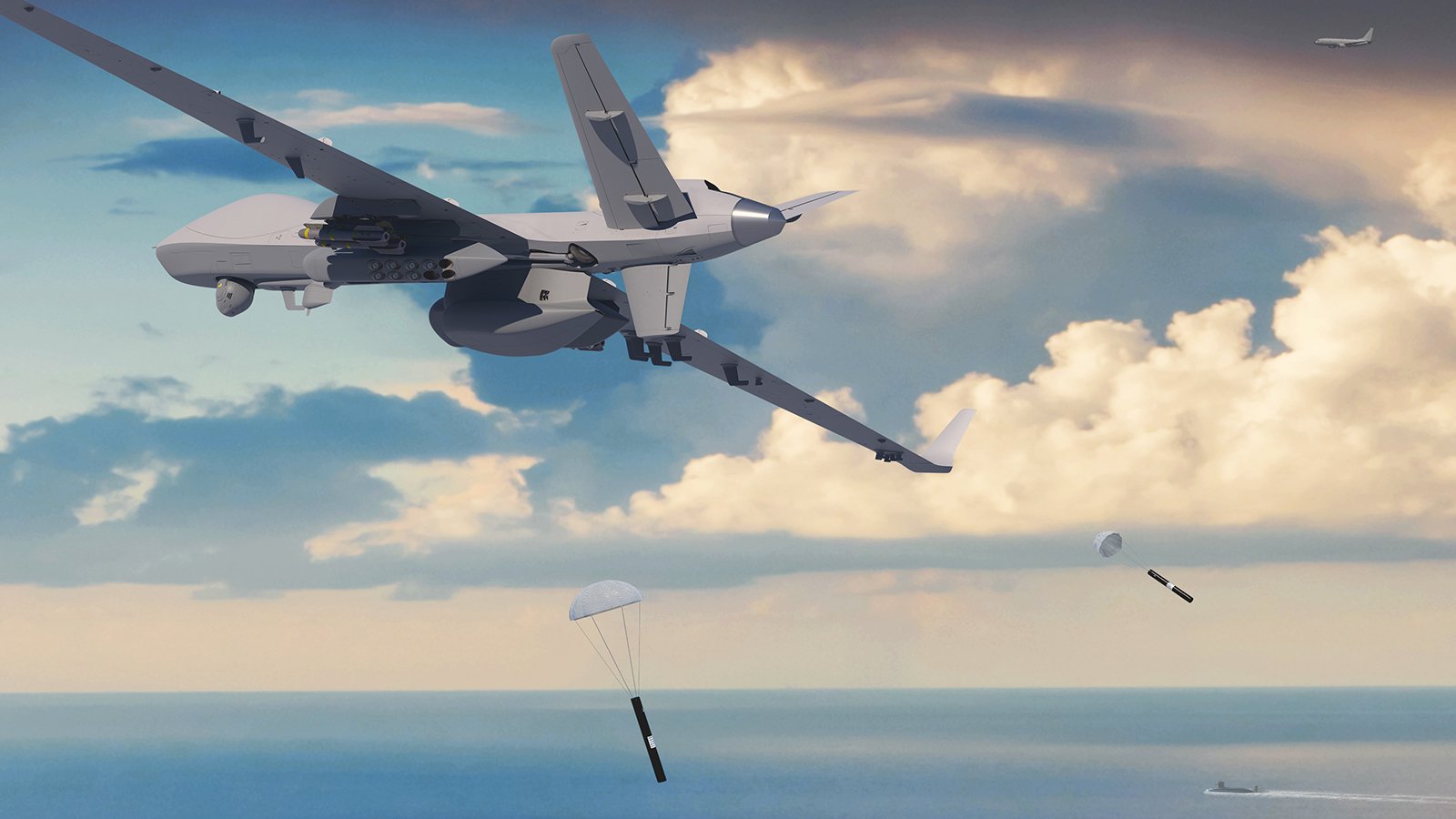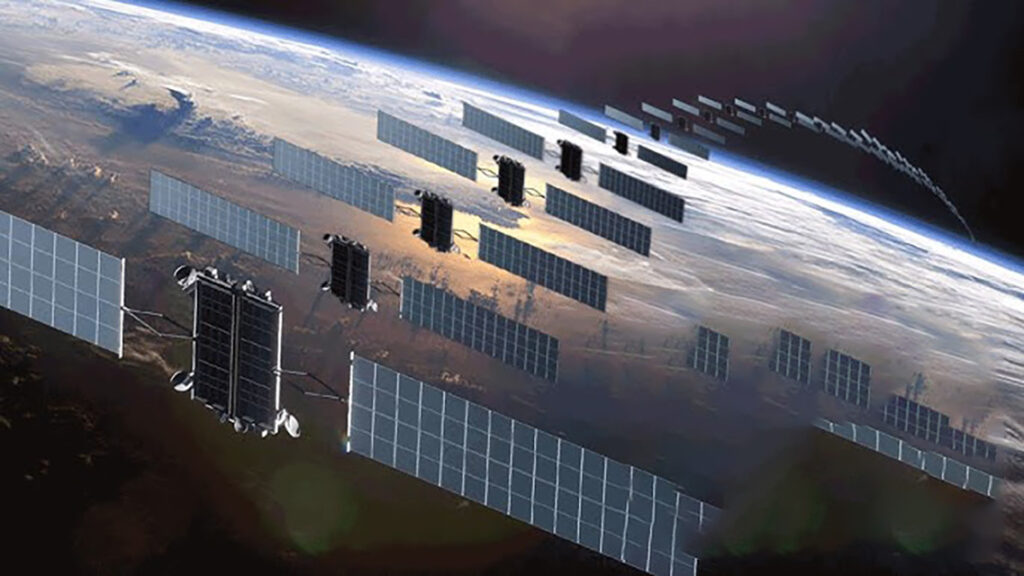In the era of Great Power competition, state of the art technologies are needed - Breaking Defense

For the maritime domain, GA-ASI’s MQ-9B SeaGuardian® uses advanced sonobuoy technology to track submarines.
World defense leaders are gathering in Australia for the 2023 Avalon International Airshow against the backdrop of some of the toughest security challenges in the world.
Continued attempts by China to coerce Australia, the deep chill between China and the United States, the ongoing war in Ukraine and more – these are difficult problems, and they’re not going away anytime soon.
Responsible powers need the newest and best tools in order to assure their own security, their international commitments and to preserve the allies’ goal for peace and security in the Indo-Pacific region and beyond. The good news is that the state of the art in advanced aircraft and other systems give military, intelligence and other government leaders newer and better options than they’ve ever had.
There are many good examples, among the systems manufactured by General Atomics Aeronautical Systems, Inc., the world leader in remotely piloted, multi-mission aircraft. San Diego-based GA-ASI invented and pioneered the use of unmanned aircraft with its iconic Predator, giving it the knowledge and experience to be better poised than anyone else for the expansive new era of what’s possible with unmanned systems.
The state of the art
This includes aircraft such as the MQ-9B SkyGuardian, a direct descendant of that earlier Predator – but better in every way. The MQ-9B is larger, can fly for longer, carry bigger payloads and do more in every respect. It can support missions over land, coastal areas or open ocean. It can support mission across multiple domains including land and maritime, all within the same flight if necessary.
A number of advanced militaries are using or plan to make use of the MQ-9B, including the UK Royal Air Force, Belgium, Taiwan and Japan, with more programs expected. Users prize its ability to fly for around 30 hours, collect high-quality, multi-sensor intelligence and exploit a number of other tools or sensors, from communications relays to anti-submarine warfare systems.
Although potent on its own, the SkyGuardian and its sibling SeaGuardian also make powerful complements to other tactical units. They’re a fraction of the cost to operate of a big, human-crewed maritime patrol aircraft, and yet they generate nearly all of the same intelligence and have many similar capabilities. And when SeaGuardian works together with those aircraft, it vastly expands what can be accomplish together as a team.
Integrating SeaGuardian into air and other operations revolutionizes anti-submarine warfare, for example. And the aircraft also enables any number of other important functions at sea – spotting distant targets, for example, which could then be engaged by a surface warship using long-range weapons to avoid risk. The Australian Defence Force is making big commitments to improve its long-range strike capabilities and SeaGuardian is the ideal sensing and targeting asset to connect long-range fires platforms to their objectives.
MQ-9B doesn’t only have high-quality sensors that enable joint commanders to see precisely what they wish. Its long endurance also means that it can surveil and report on targets for longer than anything else available today — with no intermittence of the kind often associated with other overhead assets.
Machine learning and high degrees of automation make SeaGuardian the most capable intelligence system of its kind. A proprietary Detect and Avoid System, invented by GA-ASI, makes national airspace authorities able to certify MQ-9B to operate alongside traditional aircraft with no special accommodation: no special corridors, human-piloted chase aircraft or other arrangements. MQ-9B can operate just like any other aircraft; its pilots communicate with air traffic controllers, just as would a crewed aircraft.

GA-ASI’s Gray Eagle Extended Range delivers a new degree of power, interoperability, and combat capability.
Enter the Gray Eagle
SeaGuardian and SkyGuardian aren’t the only advanced aircraft being manufactured today by GA-ASI. The slightly smaller, but similarly capable, Gray Eagle 25M also represents the cutting edge in its category, focused on the needs of major landpower services such as the U.S. Army or others.
The newest Gray Eagle offers more onboard power to support the latest high-tech sensing and computing, along with a modular, open-architecture design that permits quick and easy integration of new equipment. To put it another way, the new Gray Eagle 25M is like a mobile phone that can get new features with new software. If a user needs it to do something different, it’s only a question of downloading the right app.
These new qualities, combined with the legacy features of the aircraft, also make it ideal as an augmentation to other units. Gray Eagle already was one of the best examples of “manned-unmanned teaming,” in which, for example, the human crew aboard an AH-64 Apache helicopter can use the Gray Eagle as needed for battlefield surveillance, targeting and threat avoidance. Tough lessons from Ukraine highlight the importance of situational awareness to battlefield helicopter survivability.
But the Gray Eagle 25M also is showing the way forward on new types of “manned-unmanned teaming.” The aircraft is an optimal platform for new, small unmanned systems called air-launched effects. These too are open architecture, giving customers the option to select various models for various missions. Among GA-ASI’s systems is the Eaglet, which recently recorded a milestone flight test with the U.S. Army.
Gray Eagle and its larger sibling, the MQ-9B, are available today to permit responsible nations to focus both on contemporary and future needs, including on the important multi-domain operations that blur the old lines between the green and blue services. But because they’re mature, long-proven systems, they’re highly cost competitive when compared with many other aircraft – or as compared with attempting to design a new system from a clean sheet.

GA-ASI’s Collaborative Combat Aircraft, Gambit Series, enable warfighters with disruptive tactics, machine learning, and adaptability at scale.
More advanced systems in the works
Advanced new future capabilities also are in the works from GA-ASI. One of the most exciting responds to a U.S. Air Force desire to augment its human-piloted fighters with “collaborative combat aircraft.” In the future, the Air Force wants pilots to have numbers of highly autonomous wingmen that can scout ahead of them, provide multiple looks at contacts, watch for long periods of time and, if necessary, release ordnance of their own.
That’s why GA-ASI is building a system called Gambit. This family of four aircraft are about 70 percent common across core systems – reducing their costs and greatly simplifying construction – but each one has its own unique mission: air domain sensing; armed escort; low-observable reconnaissance; and high-quality aggressor training. The Air Force Research Lab recently issued GA-ASI a contract to build and test the first of these.
Still other new systems, ranging from new small aircraft to a very large one – an optionally manned surface-effect transport called Liberty Lifter – also are coming from General Atomics Aeronautical Systems. So even though the international security challenges for Australia and its allies won’t get easier to solve, the tools with which to address them will continue to improve.


No comments:
Post a Comment